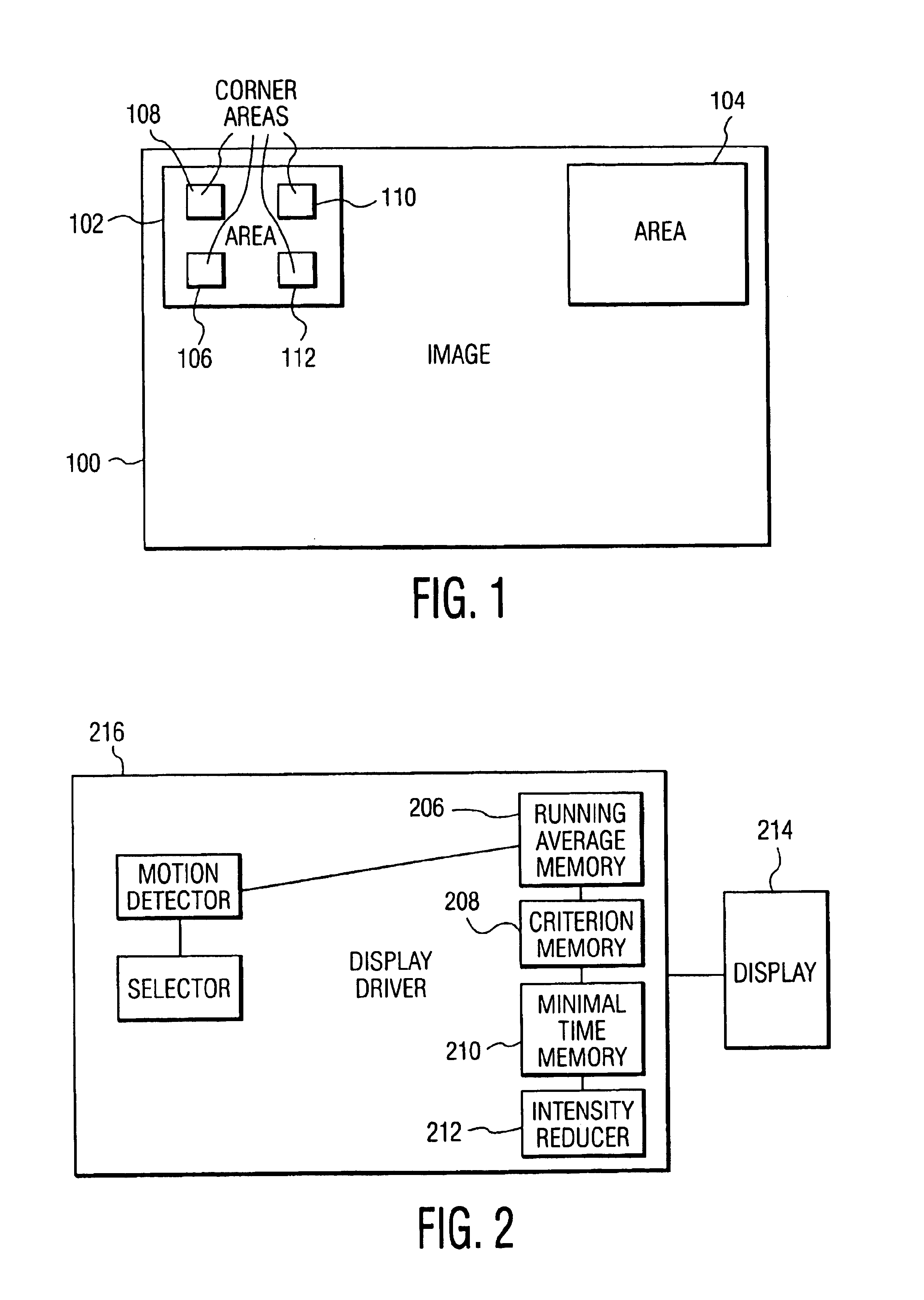System and method of displaying images
- Summary
- Abstract
- Description
- Claims
- Application Information
AI Technical Summary
Benefits of technology
Problems solved by technology
Method used
Image
Examples
Embodiment Construction
FIG. 1 shows an example of a display screen displaying an image 100 showing positions of areas 102 and 104 within which the intensity can be reduced. Stationary objects, such as logos, are often displayed in a corner of the image because they cover the image at that area to a minimal extent. To be able to detect these logos, it is useful to search for stationary object in the corners of the image. The areas 102 and 104 are therefore positioned in the corners of the image 100 but, in principle, they may be positioned anywhere on the image or even move across the image and regularly reach a different position. Furthermore, logos are generally not so large: on a 28 inch display, they are often smaller than 3-by-3 cm. It is thus sufficient to search for motion in relatively small areas of, for example, 50-by-50 pixels. The number of areas within which logos can be detected may vary. For example, the image may be entirely divided into small areas within which motion is searched. The area...
PUM
 Login to View More
Login to View More Abstract
Description
Claims
Application Information
 Login to View More
Login to View More - R&D
- Intellectual Property
- Life Sciences
- Materials
- Tech Scout
- Unparalleled Data Quality
- Higher Quality Content
- 60% Fewer Hallucinations
Browse by: Latest US Patents, China's latest patents, Technical Efficacy Thesaurus, Application Domain, Technology Topic, Popular Technical Reports.
© 2025 PatSnap. All rights reserved.Legal|Privacy policy|Modern Slavery Act Transparency Statement|Sitemap|About US| Contact US: help@patsnap.com



